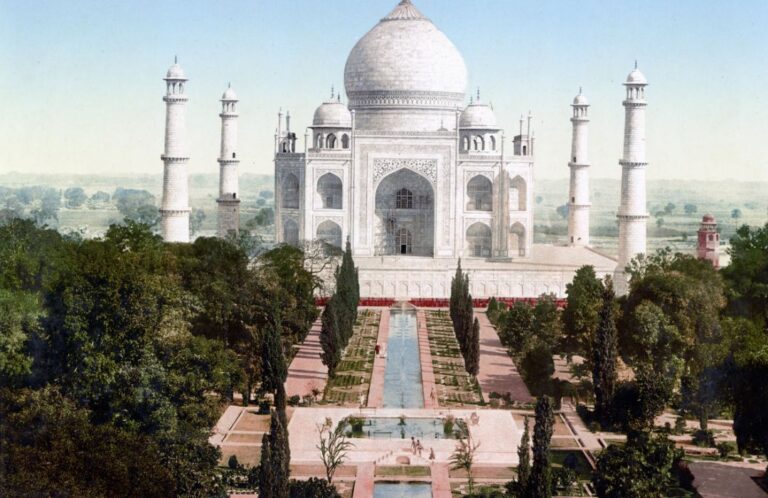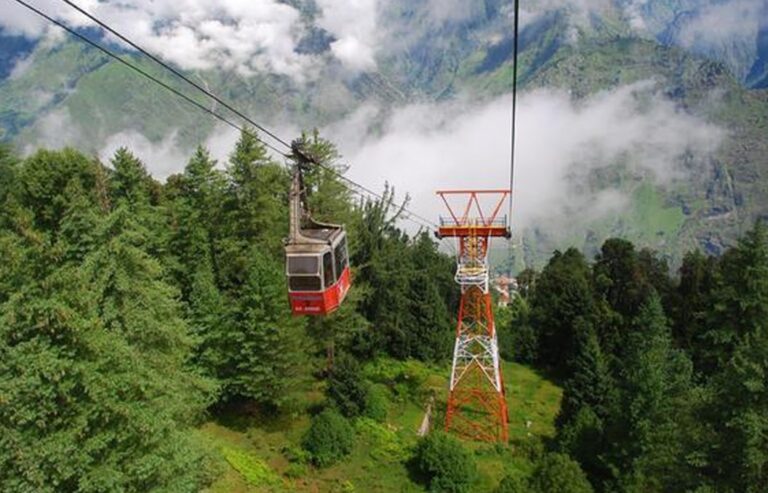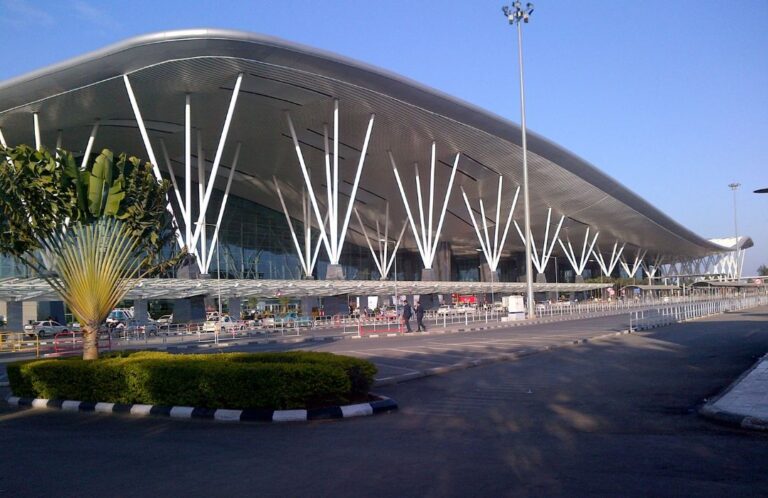Seasonal Travel Guide: Best Times to Explore India's Diverse Regions

North India (Delhi, Agra, Jaipur)
Visiting North India during the winter months, from October to March, offers travelers an ideal opportunity to explore iconic cities like Delhi, Agra, and Jaipur. The mild and pleasant climate during this time ensures that visitors can enjoy outdoor activities and immerse themselves in the rich cultural heritage and historical wonders of the region without being hindered by extreme weather conditions.
- Perfect Timing: Winter, spanning from October to March, is the best time to visit North India, including popular destinations like Delhi, Agra, and Jaipur.
- Enjoyable Climate: The winter months provide a temperate and enjoyable climate, offering relief from the intense summer heat experienced in the region.
- Optimal for Exploration: Travelers can comfortably explore historical landmarks such as the Taj Mahal in Agra, the bustling streets of Delhi, and the colorful heritage of Jaipur without facing adverse weather conditions.
- Enhanced Experience: The cool winter air enhances the overall touring experience, allowing visitors to appreciate the beauty of North India’s diverse landscapes, architecture, and history.
- Memorable Journey: Whether it’s admiring the architectural marvels of Delhi, marveling at the grandeur of the Taj Mahal, or immersing oneself in the royal legacy of Jaipur, the winter months offer an ideal backdrop for a memorable and delightful journey through North India.
South India (Kerala, Goa, Chennai)
Exploring South India, which includes renowned destinations like Kerala, Goa, and Chennai, demands consideration of its tropical climate when planning your visit. However, the winter months, spanning from November to February, emerge as the prime time for embarking on an unforgettable journey through this vibrant region. During this season, the weather becomes more favorable, offering travelers an ideal atmosphere to delve into the natural beauty and cultural diversity that South India boasts, without the discomfort of extreme heat prevalent in other times of the year.
- Ideal Timing: Winter, from November to February, stands out as the most suitable period for visiting South India, encompassing popular destinations like Kerala, Goa, and Chennai.
- Tropical Climate Influence: Understanding South India’s tropical climate is crucial in determining the best time to travel to the region.
- Optimal Season for Exploration: The winter season provides excellent weather conditions, making it ideal for exploration and leisure activities across South India.
- Perfect Atmosphere for Tourism: Travelers can fully immerse themselves in the region’s natural beauty and cultural richness during this time, as the moderate temperatures offer a comfortable environment for sightseeing and outdoor adventures.
- Diverse Attractions: South India offers a variety of attractions, including serene backwaters in Kerala, pristine beaches in Goa, and bustling metropolitan life in Chennai, all of which can be enjoyed to the fullest during the winter months.
- Moderate Weather: Unlike the scorching heat experienced in other seasons, the winter season brings relief with milder temperatures, ensuring a more enjoyable and comfortable travel experience.
- Complete Vacation Experience: Whether it’s unwinding amidst the tranquil backwaters, soaking up the sun on Goa’s beaches, or exploring the vibrant streets of Chennai, the winter season sets the perfect stage for a fulfilling and joyful vacation in South India.

Himalayan Region (Himachal Pradesh, Uttarakhand)
The Himalayan region, home to breathtaking states like Himachal Pradesh and Uttarakhand, offers a diverse range of experiences throughout the year. In the summer months of May to June, the rugged terrains beckon adventurers with cooler temperatures and lush greenery, creating the perfect backdrop for hiking and wildlife spotting enthusiasts. Meanwhile, winter, from December to February, blankets the landscape in a pristine layer of snow, transforming it into a magical winter wonderland. This season lures in snow sports enthusiasts from around the globe, offering thrilling activities like skiing and snowboarding. Whether you seek the tranquility of nature or the adrenaline rush of extreme sports, the Himalayas cater to all tastes and interests with its unique seasonal offerings.
- Summer Delights: Ideal for exploration, summer in the Himalayas offers cooler temperatures and lush vegetation, making it perfect for hiking and wildlife spotting.
- Winter Wonderland: From December to February, the Himalayan landscape is transformed into a snowy paradise, attracting snow sports enthusiasts with activities like skiing and snowboarding.
- Year-round Beauty: Regardless of the season, the Himalayas never fail to enchant visitors with their majestic beauty and diverse landscapes, providing an unforgettable experience for all who venture into its midst.
Western India (Mumbai, Pune)
The winter months, spanning from November to February, offer the most comfortable and enjoyable season to explore Western India, home to bustling cities like Mumbai and Pune. During this time, temperatures drop noticeably, providing relief from the region’s typically scorching heat and humidity, thus creating perfect conditions for outdoor exploration and activities. Travelers can immerse themselves in the vibrant culture, rich history, and dynamic urban life that Mumbai and Pune are renowned for. The milder weather enhances the entire sightseeing experience, whether it’s strolling along Mumbai’s iconic Marine Drive, uncovering the ancient wonders of the Elephanta Caves, or delving into Pune’s educational and cultural hub. Additionally, the absence of oppressive heat allows for more enjoyable outdoor gatherings, festivals, and street activities, adding to the lively atmosphere of the cities. Overall, the winter months in Western India set the stage for a delightful and engaging travel experience, catering to those drawn to city life as well as historical and cultural exploration.
- Comfortable Weather: With lower temperatures compared to summer, winter in Western India offers relief from extreme heat and humidity, making it ideal for outdoor activities and exploration.
- Enhanced Sightseeing: The milder weather enhances the experience of exploring iconic landmarks such as Marine Drive in Mumbai and the Elephanta Caves, as well as immersing oneself in Pune’s educational and cultural offerings.
- Lively Atmosphere: Without the discomfort of excessive heat, outdoor gatherings, festivals, and street activities become more enjoyable, adding to the lively ambiance of Mumbai and Pune during the winter months.

Eastern India (Kolkata, Darjeeling)
Planning a trip to Eastern India, encompassing the vibrant city of Kolkata and the charming hill retreat of Darjeeling, the winter months shine as the prime time to visit. Spanning from November to February, this season offers respite from the heat and humidity that characterize other times of the year in this region. With milder and more pleasant weather, winter sets the stage for an immersive experience in Kolkata’s rich cultural heritage and Darjeeling’s breathtaking landscapes. In Kolkata, known as the City of Joy, visitors can explore its ancient streets, admire colonial-era architecture, and partake in cultural events without being hindered by oppressive heat. Landmarks like the historic Howrah Bridge and the iconic Victoria Memorial, along with the city’s diverse culinary scene, become even more enticing during this time. Meanwhile, in Darjeeling, renowned for its tea plantations and stunning Himalayan vistas, the winter months offer clear skies and crisp air, enhancing the allure of this hill station.
- Pleasant Weather: Winter in Eastern India provides relief from the heat and humidity, offering milder and more enjoyable conditions for exploring Kolkata and Darjeeling.
- Cultural Exploration: In Kolkata, travelers can delve into the city’s rich cultural tapestry, stroll through historic streets, visit landmarks like the Howrah Bridge and Victoria Memorial, and savor diverse gastronomic experiences, all without the discomfort of extreme heat.
- Scenic Beauty: In Darjeeling, the winter months bring bright skies and fresh air, enhancing the beauty of its tea plantations and Himalayan vistas, making it an ideal time for outdoor activities and sightseeing.
Central India (Madhya Pradesh)
When planning a trip to Central India, especially the state of Madhya Pradesh, the winter months from October to March stand out as the ideal time to visit. This period is widely considered the best for exploring the region’s diverse landscapes, historical marvels, and cultural gems. With mild temperatures prevailing throughout, visitors can expect a comfortable and enjoyable environment. Winter provides an excellent opportunity for outdoor activities, sightseeing at archaeological sites, and immersing oneself in the state’s natural beauty without enduring the scorching temperatures typical of other seasons. In this moderate climate, iconic destinations like the Khajuraho Temples, the wildlife reserves of Bandhavgarh and Kanha, and the medieval city of Gwalior become even more accessible and enchanting. The absence of summer’s oppressive heat enhances the overall trip experience, making it perfect for sightseeing, wildlife safaris, and cultural explorations. Whether you’re drawn to Gwalior’s rich history, Khajuraho’s architectural brilliance, or the wildlife experiences in national parks, a winter visit to Central India promises a delightful and memorable tour of this culturally and geographically diverse region.
- Mild Weather: The winter months offer mild temperatures, providing a comfortable environment for outdoor activities and sightseeing.
- Accessible Attractions: Iconic destinations like the Khajuraho Temples, Bandhavgarh, and Kanha National Parks, and the city of Gwalior are more accessible and enjoyable during this time.
- Enhanced Experience: The absence of oppressive summer heat enhances the overall travel experience, making it ideal for sightseeing, wildlife safaris, and cultural excursions.
The ideal time to visit India is during the winter months, from October to March. This season offers delightful weather across the country, perfect for exploring its rich cultural heritage, enjoying outdoor activities, and experiencing diverse landscapes.
The coolest month in India varies depending on the region. Generally, the winter months from December to February are considered cool across most parts of the country, especially in the northern and central regions. However, certain areas may experience cooler temperatures at different times. For example, hill stations like Shimla, Manali, and Darjeeling tend to be cooler throughout the year due to their higher elevation. It’s essential to check the specific weather patterns of the region you plan to visit for accurate information on the coolest months.
read more-
